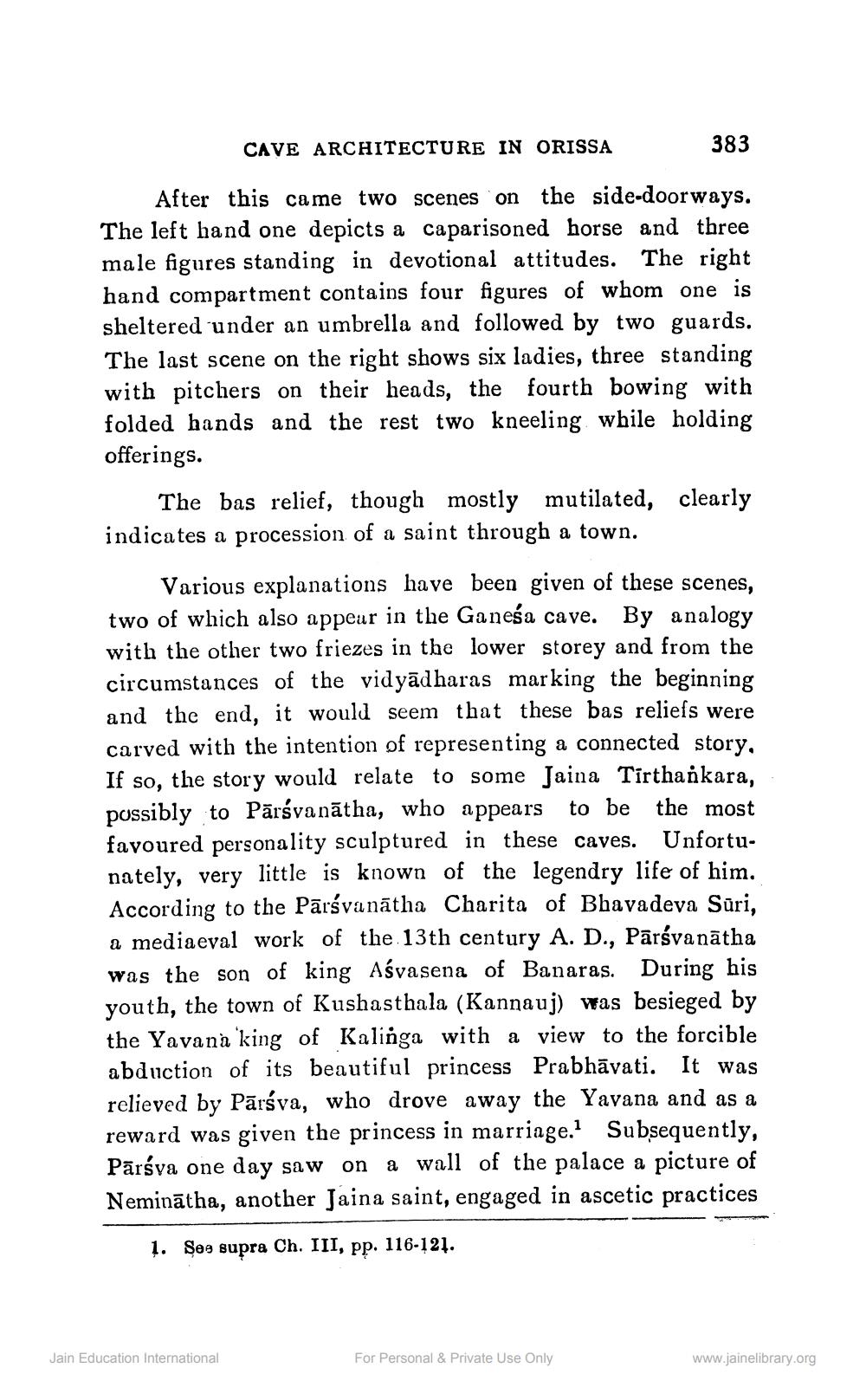________________
CAVE ARCHITECTURE IN ORISSA
383
After this came two scenes on the side-doorways. The left hand one depicts a caparisoned horse and three male figures standing in devotional attitudes. The right hand compartment contains four figures of whom one is sheltered under an umbrella and followed by two guards. The last scene on the right shows six ladies, three standing with pitchers on their heads, the fourth bowing with folded hands and the rest two kneeling while holding offerings.
The bas relief, though mostly mutilated, clearly indicates a procession of a saint through a town.
Various explanations have been given of these scenes, two of which also appear in the Ganesa cave. By analogy with the other two friezes in the lower storey and from the circumstances of the vidyādharas marking the beginning and the end, it would seem that these bas reliefs were carved with the intention of representing a connected story, If so, the story would relate to some Jaina Tirthankara, possibly to Pārsvanātha, who appears to be the most favoured personality sculptured in these caves. Unfortunately, very little is known of the legendry life of him. According to the Pārsvanātha Charita of Bhavadeva Sūri, a mediaeval work of the 13th century A. D., Pārsvanātha was the son of king Aśvasena of Banaras. During his youth, the town of Kushasthala (Kannauj) was besieged by the Yavana 'king of Kalinga with a view to the forcible abduction of its beautiful princess Prabhāvati. It was relieved by Pārsva, who drove away the Yavana and as a reward was given the princess in marriage. Subsequently, Pārsva one day saw on a wall of the palace a picture of Neminātha, another Jaina saint, engaged in ascetic practices
1. Şes supra Ch. III, pp. 116-121.
Jain Education International
For Personal & Private Use Only
www.jainelibrary.org




